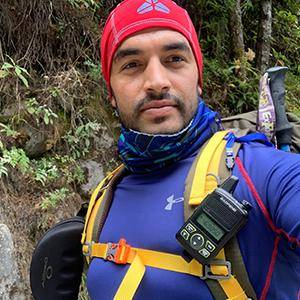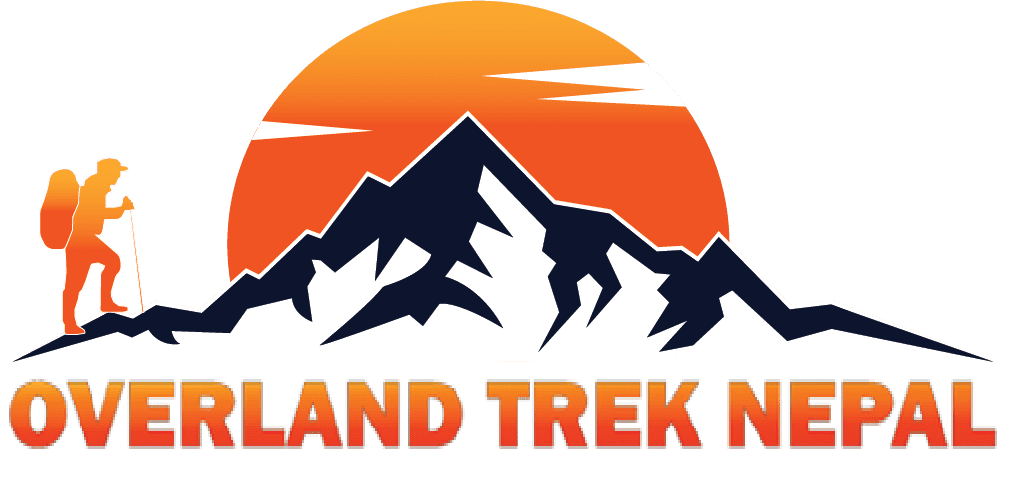The payment is encrypted and
No Booking Fee
No Cancellation Fee

Do not hesitate to give us a call, WhatsApp or email us. We are always there to help you to make your tour safe and entertaining.
Kathmandu to Lhasa tour via EBC: Lhasa, the remote abode of the Dalai Lamas, the object of devout pilgrimage and heart and soul of Tibet, is still a city of wonders, despite the large-scale encroachments of modern Chinese influence. However, The first hint that Lhasa is close is the Potala, a vast white-and-ochre fortress soaring over one of the world’s highest cities. Also, It’s a sight that has heralded the marvels of the Holy City to travelers for close to four centuries and it still raises goosebumps. It is hard to imagine a thriving city at such an altitude, functioning as the religious, cultural, and economic hub of Tibet.
While the Potala dominates the skyline, the Jokhang, some 2km to the east, is the real spiritual heart of the city. An otherworldly mix of flickering butter lamps, wafting incense, and prostrating pilgrims, the Jokhang is the most sacred and alive of Tibet’s temples. It is here and the encircling Barkhor pilgrim circuit that most visitors first fall in love with Tibet.
We would like to inform you that We don’t operate the Tibet tours during March so please don’t book the Tibet tours in March. This is all about the policy/rules of the Chinese Government. Thank you for your great understanding.
Start in Kathmandu and end in Lhasa! With the discovery tour 9 Days – Kathmandu to Lhasa Tour via Everest Base Camp, you have a 9-day tour package taking you through Kathmandu, Nepal, and 7 other destinations in Asia. 9 Days – Kathmandu to Lhasa Tour via Everest Base Camp includes accommodation in a hotel as well as an expert guide, meals, transport, and more.
After breakfast, we drive along the Friendship Highway, an 800-kilometer scenic route connecting Lhasa, the capital of Tibet, with the Nepalese border. The route offers a beautiful landscape with cascading waterfalls, rivers, and hillside villages. We will stop for lunch at the border and pass through the Nepalese customs and immigration checkpoints. Upon crossing the Sino-Nepal Friendship Bridge between Zhangmu and Kodari, we will be in Tibet! Then, we take a 30-minute drive from Kodari to Zhangmu where we must pass the Tibetan immigration checkpoint. From Zhangmu we drive up a steep winding road to Nyalam, a small Tibetan town near the Nepal border. Overnight in Nyalam.
Maximum Altitude:- 3,800m
Meals:- NA
Accommodation:- Hotel (Twin Sharing basis)
In the morning, we stroll around Nyalam to help you acclimatize to the high altitude of 3,750 meters. After lunch, we depart for Lotingri, also known as Dingri which used to be an important trading post where Sherpas from Nepal exchanged rice, grain, and iron for Tibetan wool, livestock, and salt. During the journey, we will stop by the Milarapha Cave and Chamda Hot Spring. We will also enjoy fabulous views of two spectacular passes, the Thong La Pass (5050m/16,568ft) and Lalung La Pass (5082m/16,668 ft), and the Himalayan mountain range including Mt. Everest (8848m/29,028 ft) and Shishapangma (8,013m/26,289 ft). We spend the night in Lotingri.
Maximum Altitude:- 4,050m
Meals:- Breakfast
Accommodation:- Hotel (Twin Sharing basis)
We drive to Rongbuk, an adventurous route with coarse and bumpy roads. In Rongbuk, we will visit the Rongbuk monastery, which is the highest monastery in Tibet. Then we drive towards the Everest Base Camp (5,250m/17,220ft) while enjoying views of high peaks such as the Cho Oyu (8,201m/26,906 ft), Shishapangma (8,013m (26,289 ft) and the mighty Everest, known as Mt. Chomolungma in Tibet. We will make an approximately 16km round trip around the Everest Base Camp. The base camp itself is dry and barren, but the view of Everest is spectacular with its north face towering above us. Overnight in Shegar.
Note:
On rare occasions, due to bad weather or political riots, the local government may close down the road to the Everest Base Camp for safety reasons, and without prior notice!
Maximum Altitude:- 4,150m
Meals:- Breakfast
Accommodation:- Hotel (Twin Sharing basis)
We drive towards Shigatse via Sakya. In Sakya, we visit the Sakya Monastery, which is the ancestral temple of the Sakyapa sect of Tibetan Buddhism. The main architectures inside the castle are the Dajing Hall, the Buddhism Hall, and the hall where the Sakya archbishop lived. We continue our drive to Shigatse, the second biggest city in Tibet. Overnight in Shigatse.
Maximum Altitude:- 3,900m
Meals:- Breakfast
Accommodation:- Hotel (Twin Sharing basis)
We visit the Tashilhunpo Monastery, a historic and culturally important monastery in Shigatse founded by the 1st Dalai Lama in 1447. We then continue our drive to Gyantse, located in the Nyang Chu Valley on the ancient trade routes from the Chumbi Valley, Yatung, and Sikkim. On the way, we visit the Shalu Monastery., founded in 1040 and known for its beautiful ancient mural paintings. In Gyantse, we visit the Khumbum Stupa, Phalkot Monastery, and the Gyantse Fortress which was constructed in 1390 and guarded the town. The town is surrounded by a wall 3 km long. Overnight in Gyantse.
Maximum Altitude:- 3,950m
Meals:- Breakfast
Accommodation:- Hotel (Twin Sharing basis)
We drive to Lhasa crossing the Karo La (5,010m/16,432 ft) and Kamba La (4794m/15,725 ft) passes and Lake Yamdrok Tso (Turquoise Lake), one of the three largest sacred lakes in Tibet, also believed to be a transformation of a Tibetan goddess. Then, we cross the Yarlung Tsangpo (Brahmaputra) river and view the Potala Palace from a distance. Overnight in Lhasa.
Maximum Altitude:- 5,150m
Meals:- Breakfast
Accommodation:- Hotel (Twin Sharing basis)
Sightseeing in Lhasa begins with a visit to the Potala and Norbulingka Palaces. Built in the 17th century, Potala Palace provides amazing views of the entire city and houses the private quarters of the Dalai Lama, numerous grand staterooms, and chapels. Norbulingka Palace is the summer palace of the Dalai Lama and houses what is considered to be the largest man-made garden in Tibet. Next, we visit the Tibet Museum, the official museum of Tibet, which has a permanent collection of around 1000 artifacts related to the cultural history of Tibet. Overnight in Lhasa.
Maximum Altitude:- 3,650m
Meals:- Breakfast
Accommodation:- Hotel (Twin Sharing basis)
We visit the Drepung Monastery, Sera Monastery, Jokhang Temple, and Barkhor Bazaar. The Drepung Monastery, which was built in the 14th century, is believed to have sheltered around 10,000 monks in the past. The history, culture, and religious beliefs of the Tibetan people are strongly concentrated and centered in this marvelous monastery. The Sera Monastery is a preserved monastery with white-washed walls and golden roofs. Jokhang Temple is another important sacred site that unravels more deep-seated mysteries of Tibetan Buddhism. We then stroll through the Barkhor Bazaar (market). With its open-air stalls, shops, and a crowd of pilgrims, it is the epicenter of Lhasa. Overnight in Lhasa.
Maximum Altitude:- 3,800m
Meals:- Breakfast
Accommodation:- Hotel (Twin Sharing basis)
Your adventure in the Himalayas has come to an end. You can do some shopping, return to Kathmandu, or continue to mainland China.
***Flights are not included
We would like to inform you that We don’t operate the Tibet tours during March so please don’t book the Tibet tours in March. This is all about the policy/rules of the Chinese Government. Thank you for your great understanding.
NOTE: All of the trekking hours and distances mentioned above are estimates and should only be used as a general guideline.
Be mindful of the high altitude in Lhasa, which stands at approximately 3,650 meters (11,975 feet). It’s recommended to acclimatize gradually to prevent altitude-related issues. Adequate rest and hydration are crucial during the initial days.
Ensure you have the necessary travel permits for Tibet. Foreign travelers must obtain a Tibet Travel Permit, and additional permits may be required for specific regions or attractions. It’s advisable to coordinate with a reputable tour operator like Overland Trek Nepal to handle the permit application process.
Tibet experiences diverse climatic conditions. While Lhasa has a semi-arid climate, temperatures can vary significantly between day and night. Pack accordingly, including layers for varying temperatures and comfortable walking shoes.
Tibet has a deeply rooted Buddhist culture. Show respect for local customs and traditions, especially in religious sites. It’s customary to walk clockwise around sacred sites, known as kora, and to refrain from photography in certain areas.
The official currency is the Chinese Yuan (CNY). Credit cards are not widely accepted, so it’s advisable to carry sufficient cash. ATMs are available in Lhasa, but they may have limited services, so plan accordingly.
Respect photography guidelines, especially in religious sites. Some monasteries may have restrictions on photography inside prayer halls or specific areas. Always ask permission before taking photos of locals.
Explore Tibetan cuisine, characterized by hearty and flavorful dishes. Try traditional staples like momos (dumplings), thukpa (noodle soup), and yak-based dishes. It’s also recommended to try Tibetan butter tea, a unique local beverage.
Public transportation options in Lhasa include taxis and buses. For tours to more remote areas, consider hiring a local guide or joining a guided tour. Pre-arrange transportation for ease of travel which will be arranged by Overland Trek Nepal.
Consult with a healthcare professional before traveling to Tibet, especially if you have pre-existing health conditions. Carry essential medications, and be mindful of maintaining good health practices in the high-altitude environment.
While Mandarin Chinese is widely spoken, especially in urban areas, many Tibetans speak Tibetan. Learning a few basic Tibetan phrases can enhance your travel experience and foster positive interactions with locals even, you will have a guide with you if you need any help.
The Overland Trek Nepal Team will be providing a Duffel Bag and a Down Jacket (on a refundable basis), upon your arrival in Kathmandu.
This journey encompasses urban, rural, and remote areas in Nepal and Tibet, resulting in varying accommodations and amenities. Whether it’s five-star hotels and guest houses or camping in the breathtaking Himalayan regions under the care of our staff, you can be confident that we will consistently offer the best possible facilities in every instance.
All Travelers must ensure that their passport is valid for a minimum of 6 months from the date of tour completion.
The duration of the tour typically ranges from 10 to 14 days. Highlights include exploring cultural sites in Lhasa, traveling overland to Everest Base Camp in Tibet, crossing the Friendship Highway, witnessing the stunning Himalayan landscapes, and eventually reaching Kathmandu.
Yes, several permits are required, including the Tibet Travel Permit, Alien’s Travel Permit, and Military Permit for the Tibet leg. For Nepal, you need a Nepal Entry Visa. These permits are typically arranged by the tour operator, and travelers should plan the trip through a licensed agency.
The best time for this tour is during the spring (April to June) and autumn (September to November). During these months, the weather is generally clear and stable, offering better visibility of the Himalayas. Winter months can be extremely cold, and the monsoon season (July to August) may bring rain and disrupt travel plans.
Yes, both group and private tours are available. Joining a group tour can be cost-effective and allows for a shared experience with fellow travelers. Private tours offer more flexibility in terms of the itinerary, pace, and accommodation choices. The choice depends on individual preferences, budget, and travel style. Ensure that the chosen tour operator is reputable and experienced in organizing cross-border journeys.
